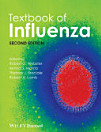Origin and Evolution of Viruses
អំពីសៀវភៅអេឡិចត្រូនិកនេះ
ការដាក់ផ្កាយ និងមតិវាយតម្លៃ
អំពីអ្នកនិពន្ធ
Esteban Domingo studied chemistry and biochemistry at the University of Barcelona, Spain and spent postdoctoral stays at the University of California, Irvine and the University of Zürich. His main interests are the quasispecies structure of RNA viruses and the development of new antiviral strategies. He is presently Professor of Research of the Spanish Research Council (CSIC) at Centro de Biología Molecular "Servero Ochoa" in Madrid.
Dr. Robert Webster has worked in the field of Virology for over 30 years, first in New Zealand and then at the John Curtin School of Medical Research in Australia. He has spent the past 25 years at St. Jude Children’s Research Hospital in the Department of Virology & Molecular Biology. In addition to his position as Chairman at St. Jude, Dr. Webster is Director of the U.S. Collaborating Center of the World Health Organization dealing with the ecology of animal influenza viruses. He has served on numerous national and international advisory boards and is a Fellow of the Royal Society. Dr. Webster has published extensively on influenza in areas covering the origin of pandemic strains, genetic variation, structure and function of virus and, in conjunction with Graeme Laver, was responsible for the development of influenza subunit vaccines.





